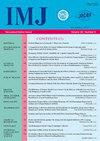RADIATION DIAGNOSIS OF INSTABILITY IN CERVICAL AND LUMBAR SPINE VERTEBROMOTOR SEGMENTS
Q4 Medicine
引用次数: 0
Abstract
The spine is a complex biomechanical system with dual support and protection function that can adapt to different loads. The vertebromotor segment function depends on the structure of the vertebrae and intervertebral disc, mechanical strength of the structures that provide stability in this department. In a stable segment, the normal relationship between the vertebrae is maintained, which prevents their deformation and pain under normal physiological stress. It is also important to protect the spinal cord, nerve roots and minimize energy expenditure. Instability of the vertebromotor segment is manifested in its pathological mobility, among the causes of which are degenerative changes in the discs, intervertebral joints and musculoskeletal system, recurrent microtraumas, inflammatory processes, developmental abnormalities, genetic diseases. There is a relationship between the degree of spinal motor segment instability and the degeneration severity in the discs. The most common method of radiological diagnosis of instability of the spinal motor segment is functional radiography, which is performed either in projection with flexion and extension, or with passive axial traction and compression. Multislice computed tomography and magnetic resonance imaging are also used to diagnose this condition. Magnetic resonance imaging is considered the most accurate method of diagnosing degenerative pathologies of the spine. The range of use of ultrasound in the diagnosis of pathologies of the musculoskeletal system, in particular the spinal motor segment, is expanding. In the study of instability of the cervical and lumbar spine, it is appropriate to use all methods of radiological diagnosis. X−rays, in addition to detecting vertebral displacement, can assess other changes in them, and magnetic resonance imaging and ultrasound better detect degenerative changes in the discs. Key words: instability of vertebromotor segments, functional radiography, ultrasonography, magnetic resonance imaging.颈椎和腰椎椎运动节段不稳的放射诊断
脊柱是一个复杂的生物力学系统,具有双重支撑和保护功能,可以适应不同的载荷。椎体运动节段的功能取决于椎骨和椎间盘的结构,以及为该部门提供稳定性的结构的机械强度。在一个稳定的节段中,脊椎之间保持着正常的关系,这可以防止它们在正常的生理压力下变形和疼痛。保护脊髓、神经根和尽量减少能量消耗也是很重要的。椎体运动节段的不稳定表现为其病理活动性,其原因包括椎间盘、椎间关节和肌肉骨骼系统的退行性变化、复发性微创、炎症过程、发育异常和遗传疾病。脊髓运动节段不稳定的程度与椎间盘退变的严重程度之间存在关系。脊柱运动节段不稳定的最常见放射学诊断方法是功能性放射学,该方法可在屈曲和伸展的投影下进行,也可在被动轴向牵引和压迫下进行。多层计算机断层扫描和磁共振成像也被用来诊断这种情况。磁共振成像被认为是诊断脊椎退行性病变最准确的方法。超声在诊断肌肉骨骼系统,特别是脊柱运动段的病理学方面的应用范围正在扩大。在研究颈椎和腰椎不稳定性时,宜采用所有放射学诊断方法。除了检测脊椎移位外,X射线还可以评估椎间盘的其他变化,磁共振成像和超声可以更好地检测椎间盘的退行性变化。关键词:椎体运动节段不稳定,功能性x线摄影,超声检查,磁共振成像。
本文章由计算机程序翻译,如有差异,请以英文原文为准。
求助全文
约1分钟内获得全文
求助全文
来源期刊

International Medical Journal
医学-医学:内科
自引率
0.00%
发文量
21
审稿时长
4-8 weeks
期刊介绍:
The International Medical Journal is intended to provide a multidisciplinary forum for the exchange of ideas and information among professionals concerned with medicine and related disciplines in the world. It is recognized that many other disciplines have an important contribution to make in furthering knowledge of the physical life and mental life and the Editors welcome relevant contributions from them.
The Editors and Publishers wish to encourage a dialogue among the experts from different countries whose diverse cultures afford interesting and challenging alternatives to existing theories and practices. Priority will therefore be given to articles which are oriented to an international perspective. The journal will publish reviews of high quality on contemporary issues, significant clinical studies, and conceptual contributions, as well as serve in the rapid dissemination of important and relevant research findings.
The International Medical Journal (IMJ) was first established in 1994.
 求助内容:
求助内容: 应助结果提醒方式:
应助结果提醒方式:


